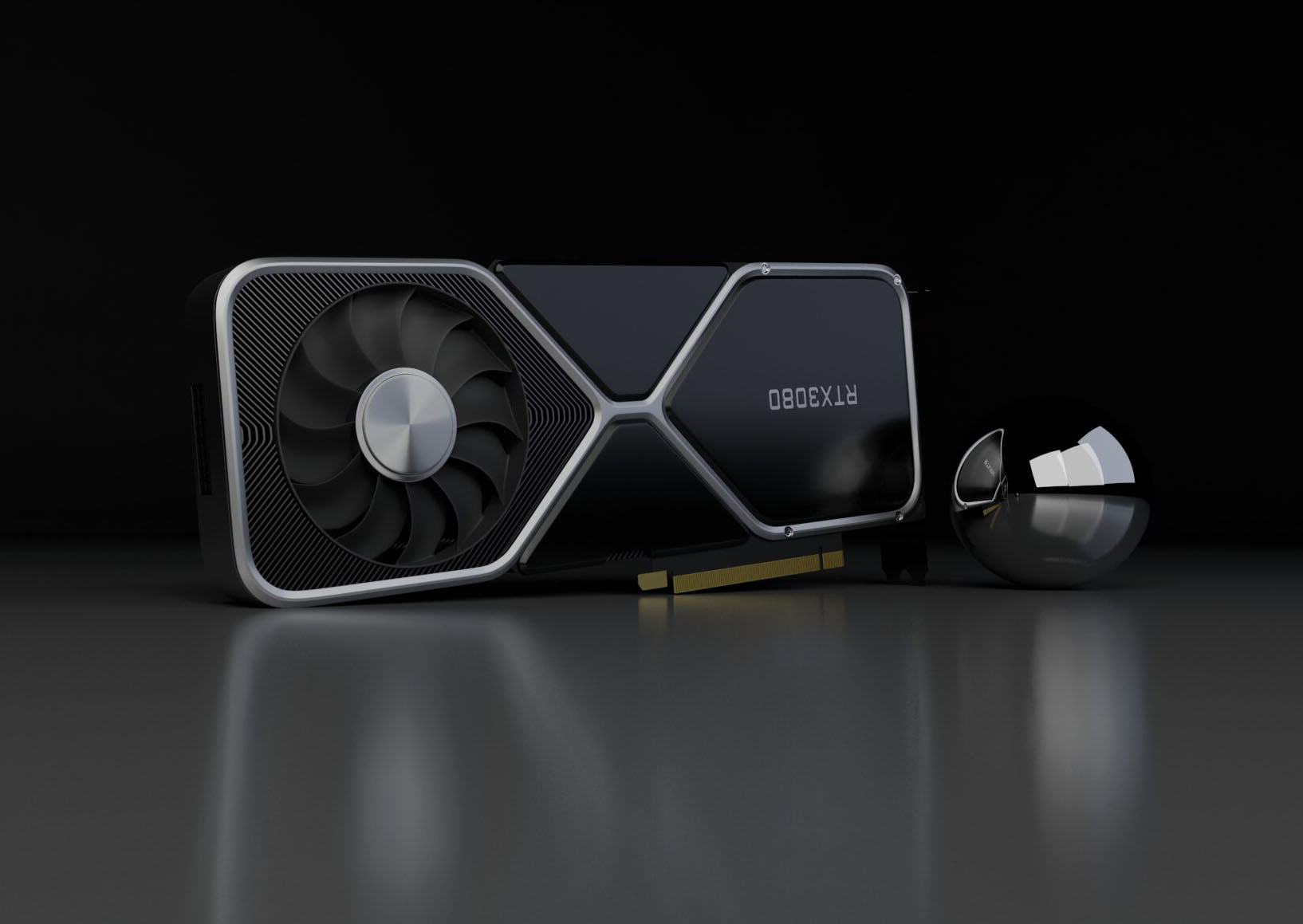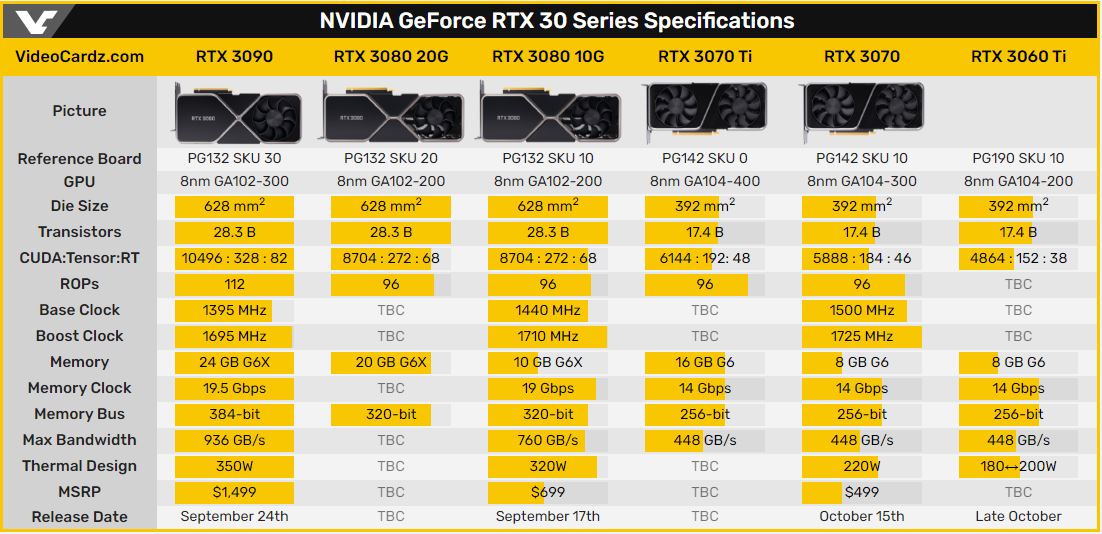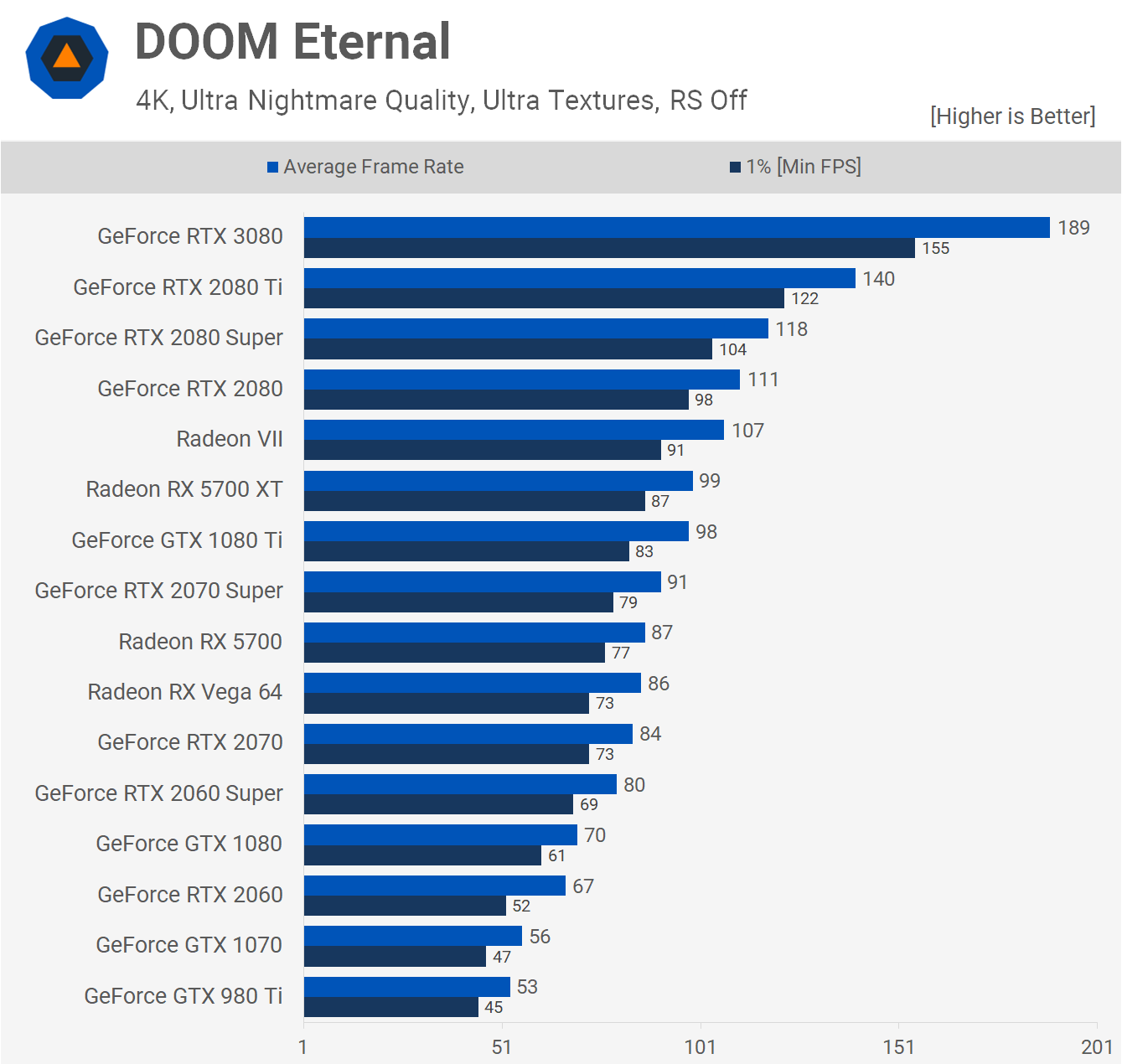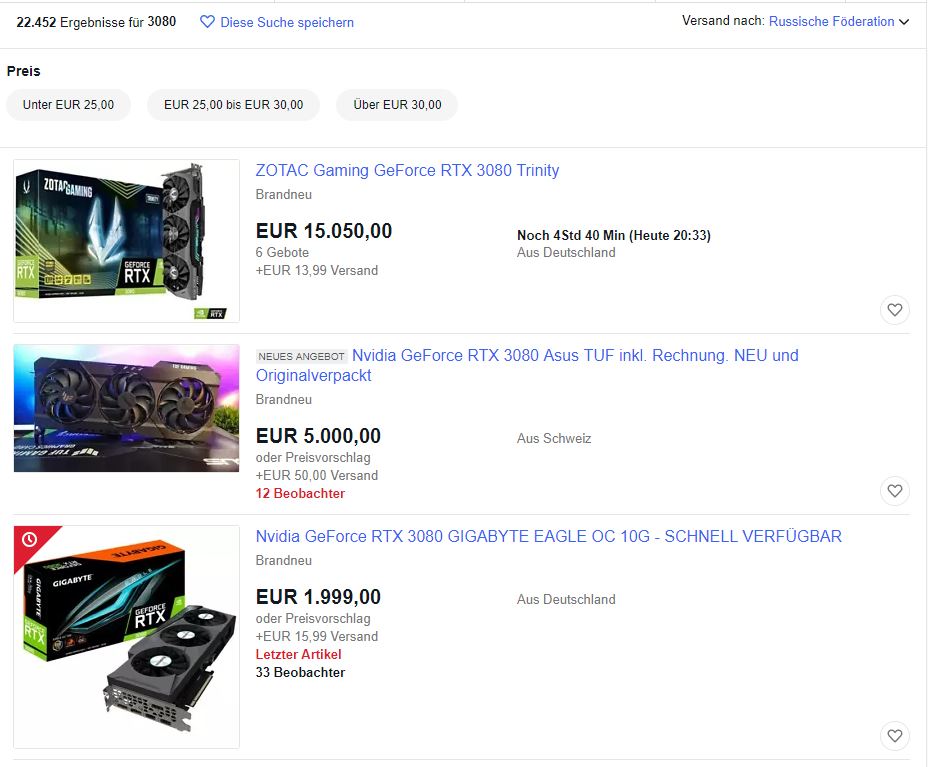
To begin with, let's recall the Ampere technical chips. According to the official presentation, which took place on September 1, the main features of the new generation were the greatly increased numbers of CUDA cores (more than 2 times higher than the values of Turing) and the new generation of RT cores, with which NVidia promised to reduce the performance drop when using ray tracing. Also, special emphasis was placed on the use of DLSS 2.0 multisampling technology, whose debut in Control and Death Stranding was a real shock for most players. It is not surprising that this particular technology is one of the key advantages of NVidia solutions over AMD video cards.

At the same time, the new products also have technical drawbacks. The 8nm Ampere chips are manufactured by Samsung, whose technical solutions are significantly inferior to those of TSMC, whose 7nm wafers are significantly denser in terms of transistor budget per square mm, and offer better performance per watt. The use of a compromise version of the Korean company led to the fact that the size of the chips turned out to be quite large, and the power consumption, despite the change in the technical process, is on average 40% higher than the values of the same segment of the Turing generation video cards (produced on the basis of the 12nm TSMC process technology). It was the increased appetites that caused the appearance of that unusual high-tech cooler of reference models,designed to keep quiet and efficiently dissipate more than 300 watts of heat. Recall that the basic RTX 3080 consumes 320 W without overclocking, and with higher frequencies this value can rise to 360 W or even higher. For the user, this means only one thing - a simple power supply from the previous assembly is no longer enough.

Now to the presentation. As part of the announcement, Jensen Huang made serious statements, announcing a two-fold advantage of the new RTX 3080 over its predecessor, the RTX 2080 (not to be confused with the Super). Blurry graphics without mentioning frames per second, as well as constant 4K underlining, ray tracing and DLSS technologies have largely made users wary - what if the raw performance of the new product is far from expectations? Numerous leaks and expectations predicted Ampere a threefold or even fourfold performance gain with ray tracing (and some even suggested that the unusual layout of the NVidia cooler is due to the presence of a separate RT chip on the rear side of the motherboard responsible for processing such instructions). In this regard, the official presentation turned out to be much more modest - 80% increase in comparison with 2080,but even such a step cannot be called a disappointment within a single generation.
Finally, the cherry on top was the price - only $ 700 for the "new flagship video card" (as Jensen called it) looked almost a gift against the background of the $ 1000 price of 2080Ti, but many people in the industry immediately emphasized that the first shipments would be very modest, so there is no need to rush to conclusions. Someone did not listen, and rushed in panic to sell their cards for next to nothing, hoping for luck. In fact, everything turned out to be much worse, but more on that later.
On September 16, RTX 3080 reviews appeared online. Impressions from real comparisons of 3080 vs 2080 turned out to be ambiguous - on the one hand, the advantage over a Turing generation card almost never exceeded 50-70%, on the other hand, thanks to the video memory buffer expanded to 10 GB, the novelty was able to show off a more significant increase in 4K. Remember the official presentation of Nvidia, where in Doom Eternal the novelty broke away from its predecessor by as much as 60 fps? It turned out that the choice of this game was not accidental - when using the Ultra Nightmare graphics preset in 4K resolution, the game consumes exactly 10 GB of video memory, which is why the RTX 2080 with 8 GB on board suffers from an acute lack of buffer, allowing the RTX 3080 to easily show a colossal an increase of more than 100%. Unfortunately for future owners, this game was the only exception.

The inevitable comparison with the 2080Ti showed that the card is only 25-30% faster than the previous flagship, which was another reason for harsh criticism. A raw 50% boost from the previous leader would have set a completely new performance bar unattainable for AMD, but now the mysterious RDNA2-based cards have the opportunity to impose serious competition on the Ampere series.
But the RTX 3080 benchmark results in games with RTX and DLSS 2.0 support were much more unexpected. It turned out that Ampere practically did not receive an increase in efficiency in the work of ray tracing algorithms compared to the first generation of RT cores in Turing - new products were on average faster in working with complex effects and lighting by only 20%, and in some cases the numbers were even lower these values. In many ways, the difference in total fps is achieved here not due to advanced RT cores of the new generation, but due to a banal increase in the overall raw performance of the video card - this is logical, but where is the 80% promised at the presentation? Even in comparison with 2080, the difference most often lay in the same plane of 50-70%. Digital Foundry, how could you?
Many will argue, saying - “To hell with him, look at the price! We pay much less and get 30% more than before! ” But is it? Everything here is much more complicated than it might seem at first glance. After the start of sales on September 17, all RTX 3080s were disassembled in a matter of minutes, and very soon very "profitable" offers for buying pre-orders began to appear on Ebay, the rates for which sometimes exceeded the real cost of the new item by tens of times.

The source
NVidia quickly turned out to be unable to accept pre-orders (the cards were simply not available), and partner decisions were also scattered almost instantly. In some places, individual copies of the cards appeared, but their prices were also significantly higher than the norm.
In Russia, the RTX 3080 also appeared - and cost 85 thousand rubles each (with a recommended price of 63 490 rubles). There were also more affordable models, but they also provided for an extra charge of 15 thousand rubles or higher. Someone has already advised to take a closer look at the well-known German store in the desire to buy the coveted card, but do not flatter yourself - despite the delicious prices, they, as elsewhere, are still not available.
What can you say about this release? Jen-Hsun Huang, as always, made thousands of people gasp and run to stores, queuing up and reselling pre-orders for big money. The RTX 3080 turned out to be far from as productive as everyone expected, ray tracing still turns 100 fps into 50, and the very nice price is as far from reality as the second chip on the back of the board. Fortunately, someday everything will be fine, and we hope that by Black Friday stores will replenish their stocks and offer the long-awaited new products of the Ampere generation to the starving PC boyars. Well, if not, there will always be an opportunity to buy Big Navi.
Don't be fooled by high-profile promises, don't believe in beautiful marketing, and never sell hardware for next to nothing for beautiful claims.